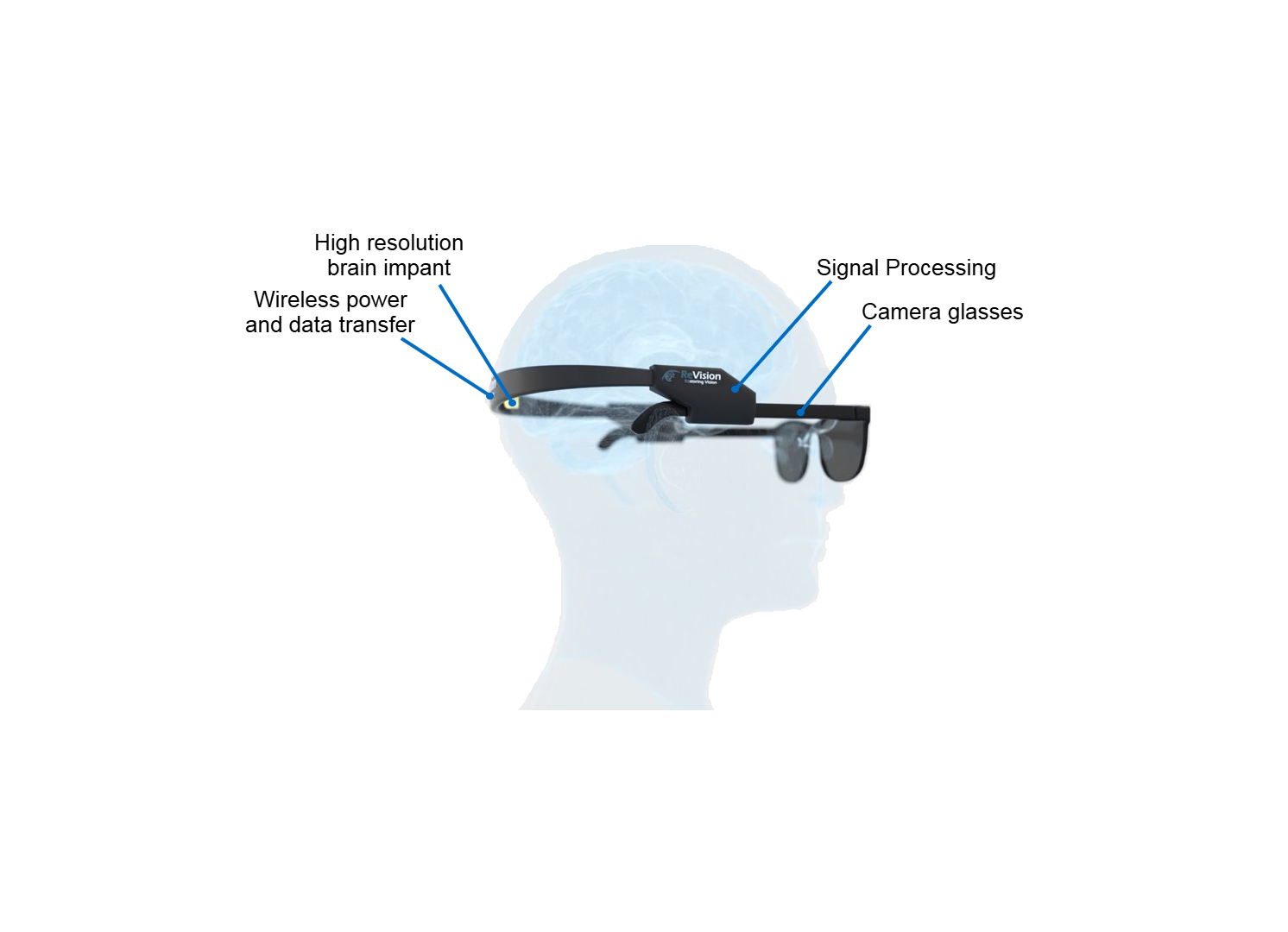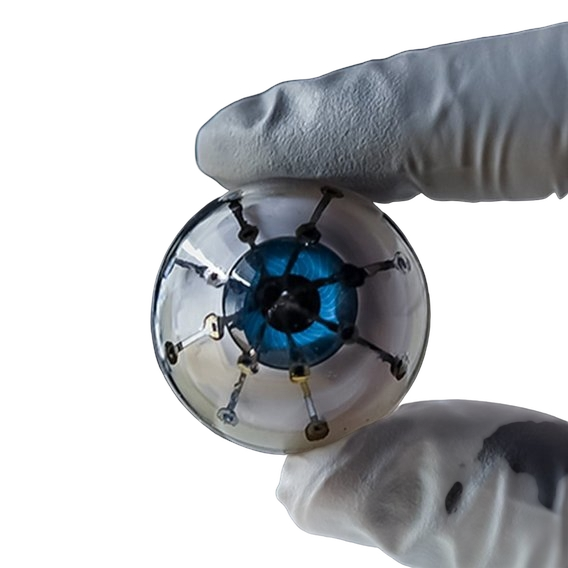For many years it has been known that injecting a small amount of electric current in certain parts of the body’s visual system creates the illusion of seeing small dots, so-called phosphenes. This can be done in the nerves in the eye itself, in the optic nerve, or in the primary visual cortex of the brain. Even for blind people this phenomenon is present.
The geometric mapping in the eye and the primary visual cortex of the brain is sufficiently simple, so stimulating at a single location will make a dot of light appear at a specific place in the visual field. By exciting many dots at once, an image or video stream can be transmitted to the brain.
As this is not a new phenomenon, many research groups and companies have performed research based on this principle. Most were focused on stimulating in the eye.
In general, a visual prosthesis contains:
A Camera: often integrated into an eyeglass frame.
An Implant: microelectrode arrays implanted in the nervous tissue for stimulation.
Electronics & algorithms: to transform the video stream of the camera into a stimulation pattern and to communicate to the implant.


A quick Google search for 'bionic eyes' or 'vision prostheses' returns many hits. The truth is that all devices demonstrated so far have insufficient performance. The image quality they offer is simply not good enough to convince potential blind users.
We have identified 5 key problems with the current state-of-the art:
An insufficient number of electrodes.
Wrong electrode location: recent results show that implanting microelectrodes in the visual cortex of the brain will lead to a much higher resolution. In contrast, most visual prostheses developed so far were designed to be implanted in the eye.
Sub-optimal stimulation algorithms.
The use of rigid, needle-like electrode arrays that are hard to scale up to large areas and cause scar tissue over time.
A lack of peripheral or of accurate central vision.
Our Occular prosthesis will not only incorporate a high count of electrodes directly in the visual cortex, but also uses advanced stimulation patterns optimized to obtain higher resolution. Moreover, Occular is based on flexible micro-electrode technology, minimizing scar tissue formation and facilitating scaling up to a high resolution. The electrode arrays also cover a large fraction of the visual cortex, making restauration of both peripheral and central vision possible.